...
- Setting Name
- This is a friendly name of the Clearblade IoT Core used to easily identify it. This must also be unique.
- Enabled
- Whether or not this Injector Setting is enabled to push data to the endpoint
- MQTT Endpoint URL
- GCP Project ID
- The Google Cloud Platform project under which this device is provisioned
- GCP Cloud Region
- The Google Cloud Platform cloud region under which this device is provisioned
- GCP Registry ID
- The Clearblade Platform registry ID under which this device is provisioned
- GCP Device ID
- The Clearblade Platform device ID under which this device is provisioned
- Private Key File
- The private key file associated with the public key provisioned for the device in Clearblade Registry
- The key needs to be in PKCS8 format. See Google's documentation here.
- Algorithm
- The algorithm type used by the key file
- Set
- The Set this Cloud IoT Core Setting is associated with
...
- Store & Forward Enabled
- Whether to enable Store & Forward capabilities for this endpoint
- Store & Forward Type
- The type of the Store & Forward mechanism options: In_Memory and Disk_Backed (available in release 4.0.17 and higher)
- Data stored with an In_Memory Store & Forward will not be persisted across a module configuration change, module disable/enable, module restart or power loss
- Data stored with a Disk_Backed Store & Forward will persist across a module configuration change, module disable/enable, module restart or power loss
- Message Capacity - deprecated in 4.0.19
- The maximum number of messages to store before dropping the oldest historical messages
Message Capacity - History Max Age - added in 4.0.19
- The maximum mazimum number of messages minutes to store history before dropping the oldest historical messagesdata
- Flush Period
- The period of time to wait (in milliseconds) between sending when flushing messages
...
Clicking on the "Create new Cloud IoT Core Setting..." link will bring up the following form for adding a new Cloud Clearblade IoT Core endpoint.
 Image Removed
Image Removed Image Added
Image Added
 Image Removed
Image Removed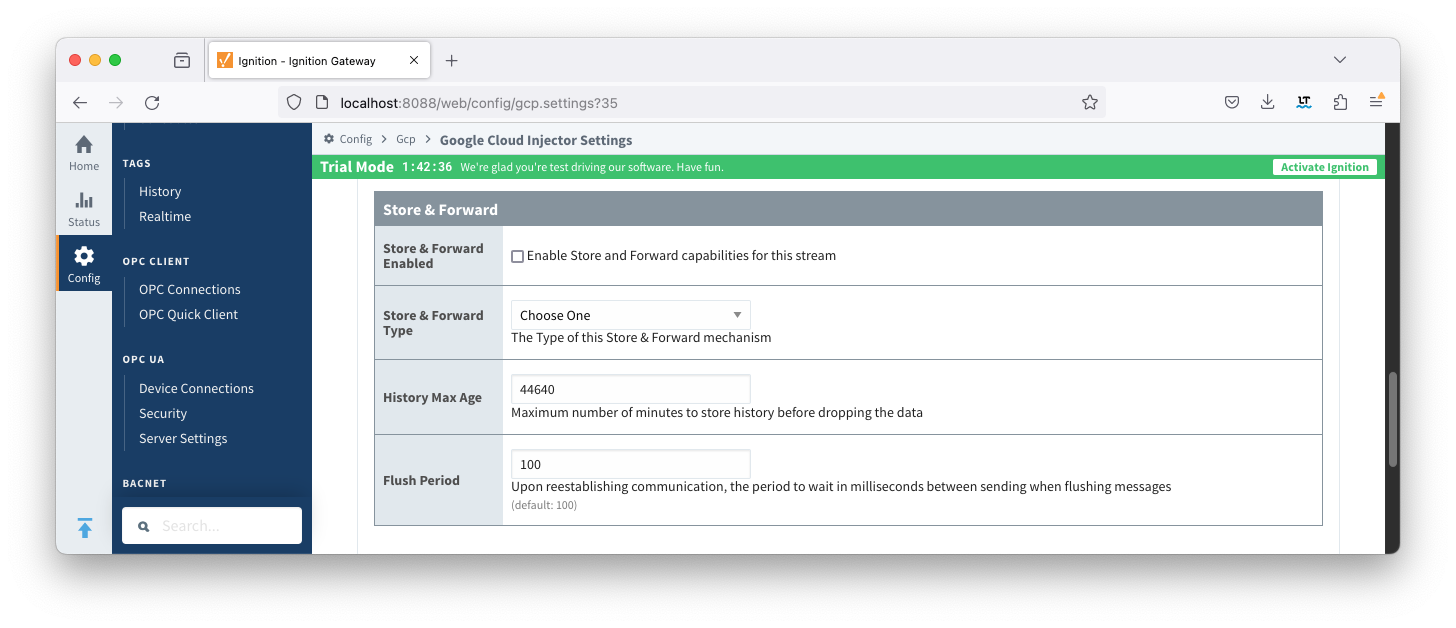 Image Added
Image Added
 Image Removed
Image Removed Image Added
Image Added
Sets
The Sets tab contains a list of Google Cloud Sets. Each set represents a grouping of Cloud Clearblade IoT Core endpoints. When a set is referenced by a Tag Agent the Agent will push Tag data to all Cloud Clearblade IoT Core endpoints contained within that Set. The Sets are disjoint, meaning that a single Cloud Clearblade IoT Core endpoint cannot endpoint cannot be in more than one set. Out of the box the Google Cloud Injector Cloud Injector module will have one "Default" set defined.
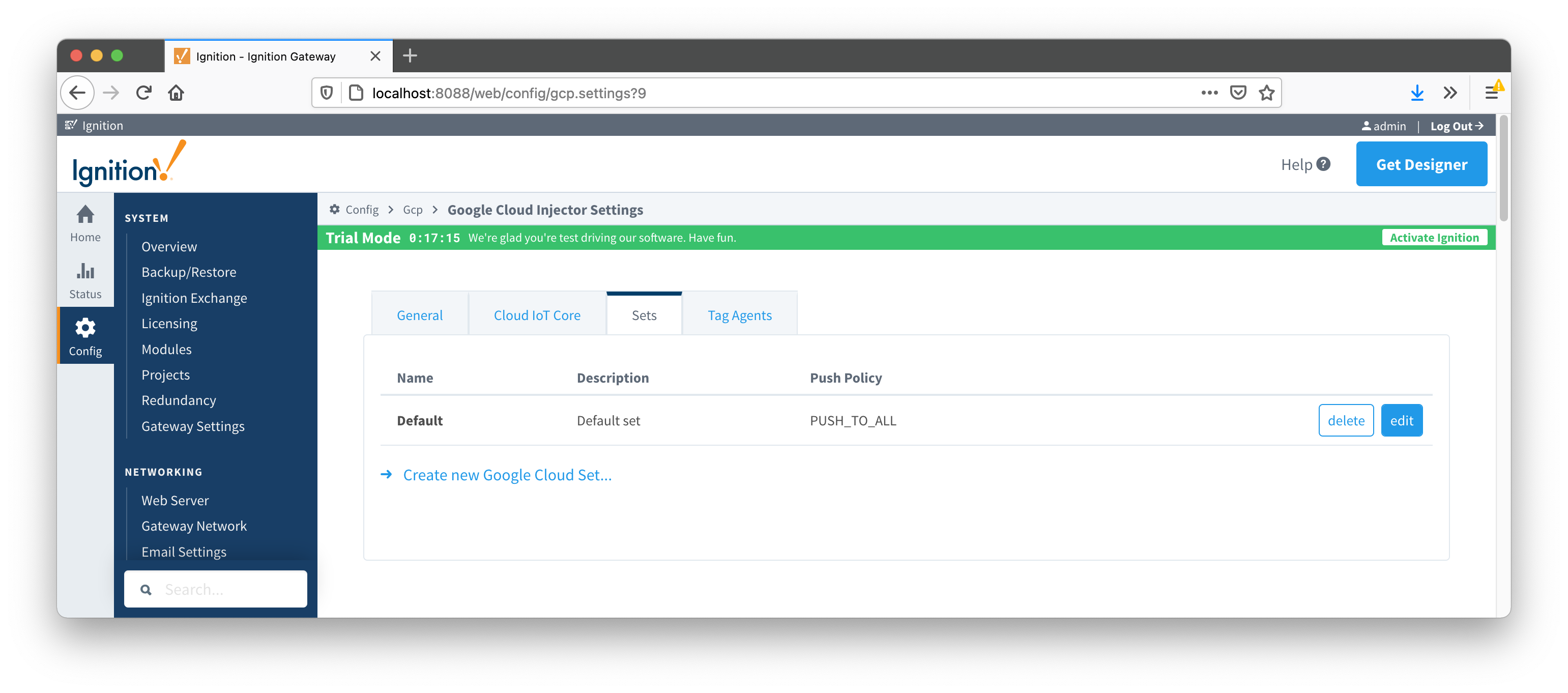 Image Removed
Image Removed Image Added
Image Added
Additional Sets can be configured for situations where multiple Tag Agents will need to push to different Cloud IoT Core endpoints. The configuration options for Sets are listed below.
...
Clicking on the 'Create new Google Cloud Set...' link will bring up the following form to add a new Set.
 Image Removed
Image Removed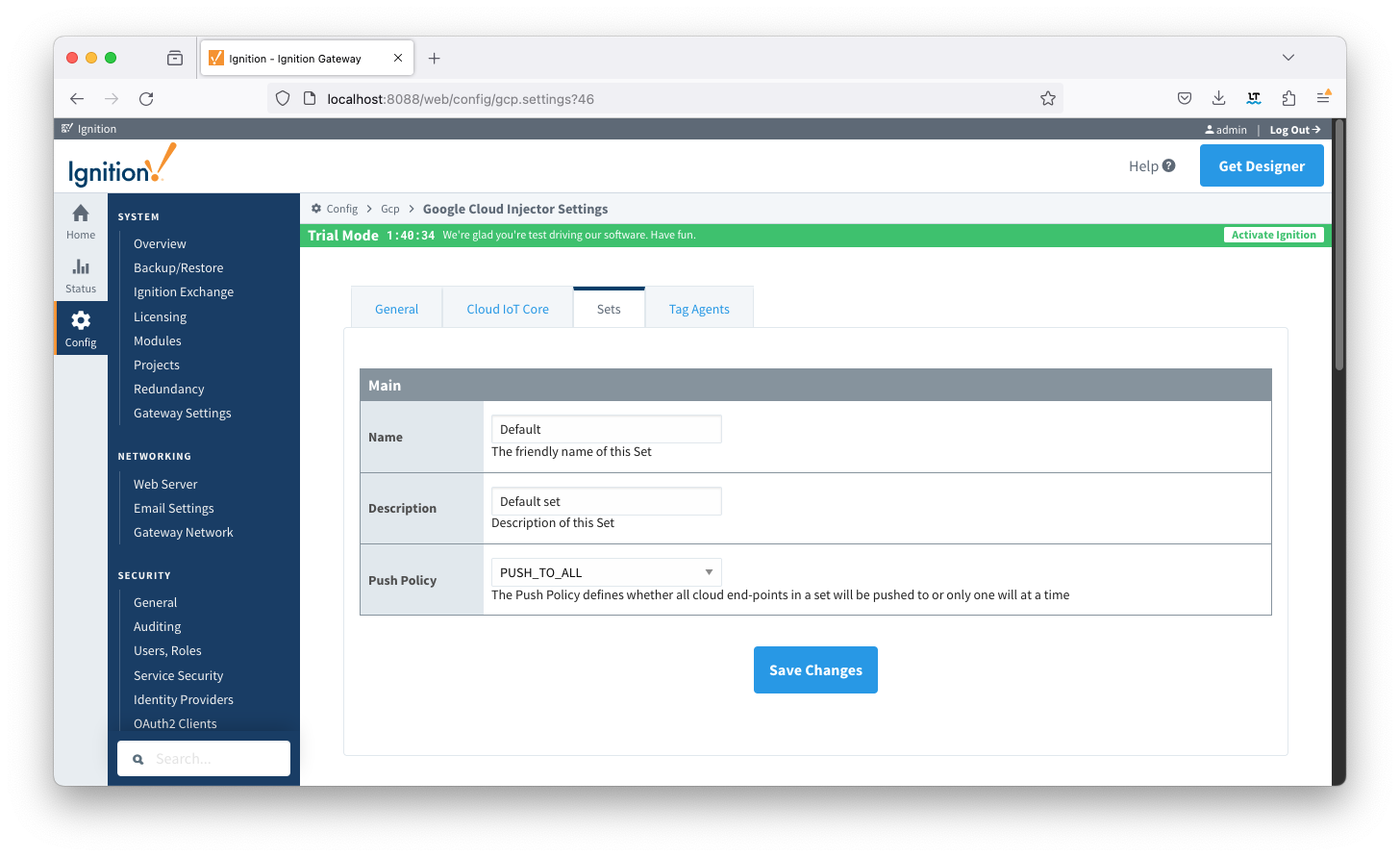 Image Added
Image Added
Tag Agents
Tag Agents are the workers within Google Cloud Injector that monitor tag events, convert them to a JSON representation, and push them to one or more Cloud Clearblade IoT Core endpoints. Out Out of the box the Google Cloud Injector module will have one "default" Tag Agent defined.
 Image Removed
Image Removed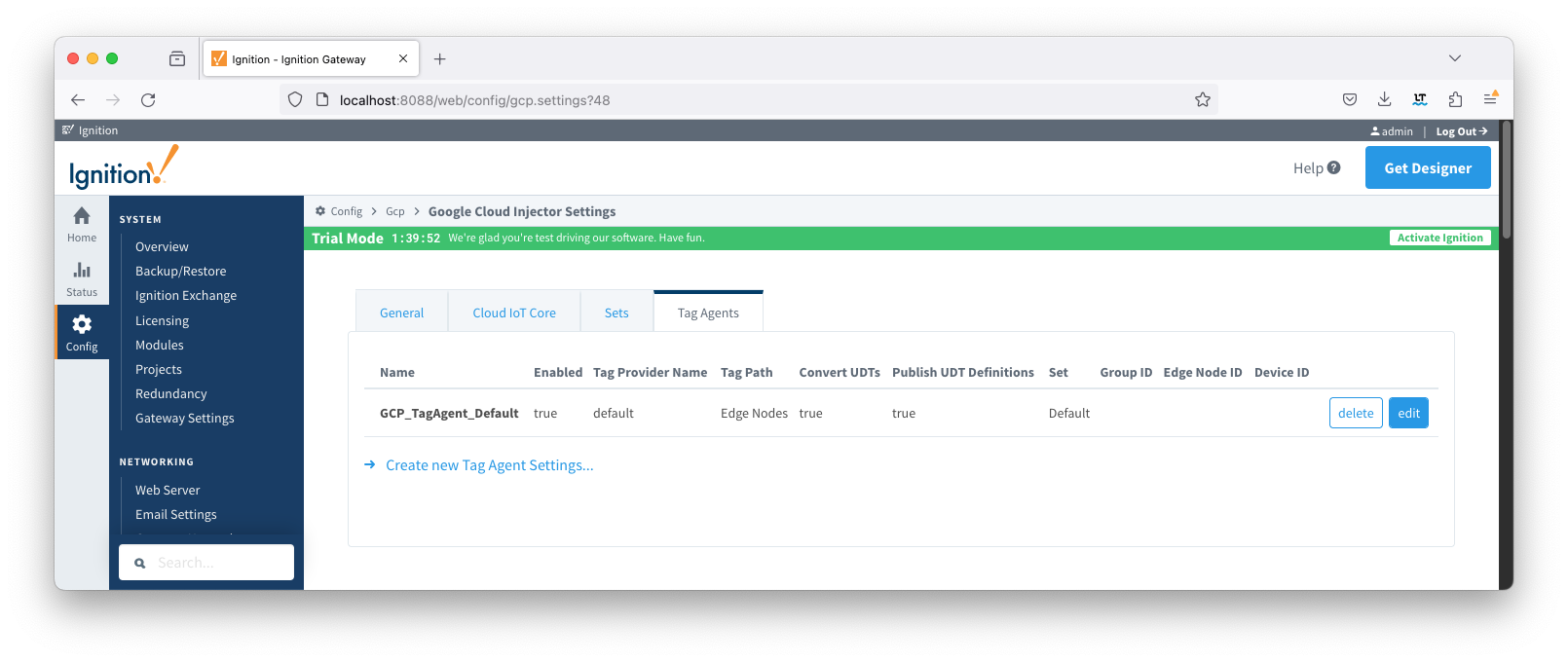 Image Added
Image Added
Tag Agents are configured to point to a single folder. All Tags within that folder will be monitored by the Tag Agent.
...
- Name
- A unique name for the tag agent.
- Enabled
- Sets whether the Tag Agent is enabled or disabled. If disabled, the Tag Agent will not run and no data will be pushed to any configured endpoints.
- Tag Provider Name
- The name of the Tag provider containing the tags.
- Tag Path
- An optional folder path under the Tag provider where the root folder of the Tags can be found.
- Push Trigger
- The trigger to use when pushing data. EVENT_DRIVEN (default) means to push on change events. PERIODIC means to push all data on a periodic basis.
- Tag Pacing Period
- The buffer period, in milliseconds, that Tag events will be aggregated into a single payload before pushing.
- Convert UDTs
- Whether to convert UDT members to normal Tags before publishing. If enabled the Tags representing the UDT member will retain their member path prefixed by the UDT Instance name.
- Publish UDT Definitions
- This can only be set if 'Convert UDTs' is false
- Whether or not to push the UDT Definitions in the the NBIRTH messages
- Optimize UDTs
- This can only be set if 'Convert UDTs' is false
- Whether or not to 'convert UDTs' only for DATA messages.
- Set
- The Set of Cloud Clearblade IoT Core endpoints that the Tag Agent will push to.
...
Clicking on the 'Create new Tag Agent Settings..' link will bring up the following form to add a new Tag Agent.
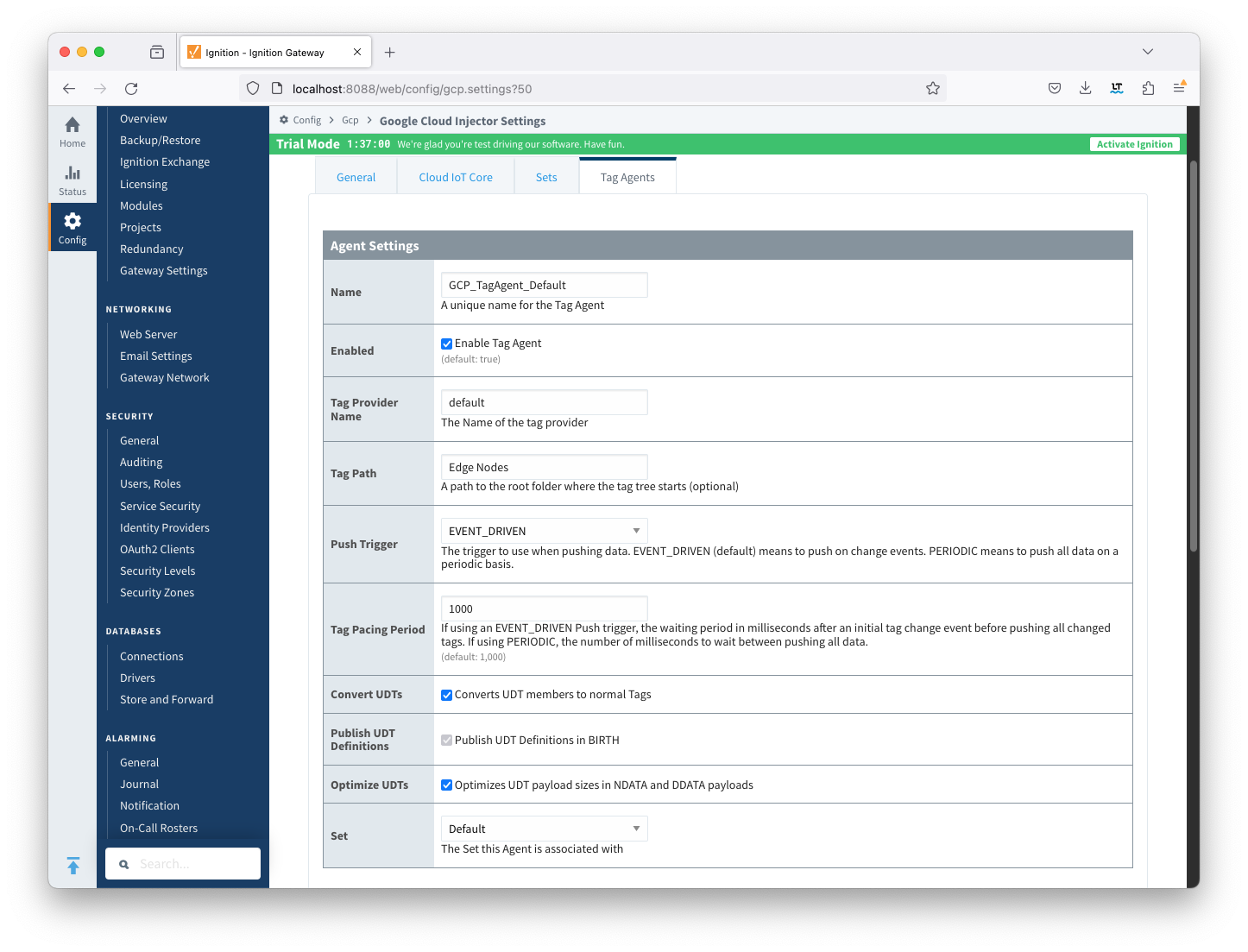 Image Added
Image Added
 Image Removed
Image Removed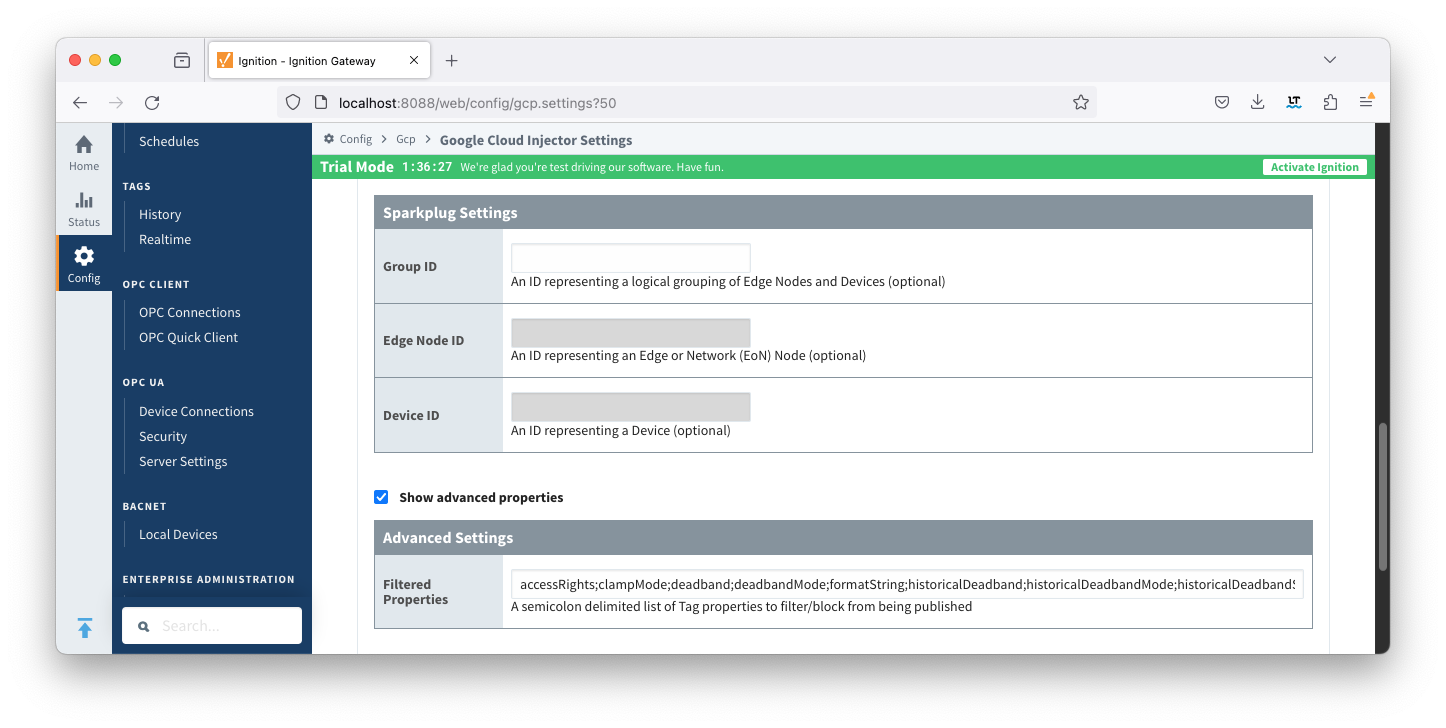 Image Added
Image Added
![]()
![]()
![]()
![]()
![]()
![]()
![]()
![]()
![]()